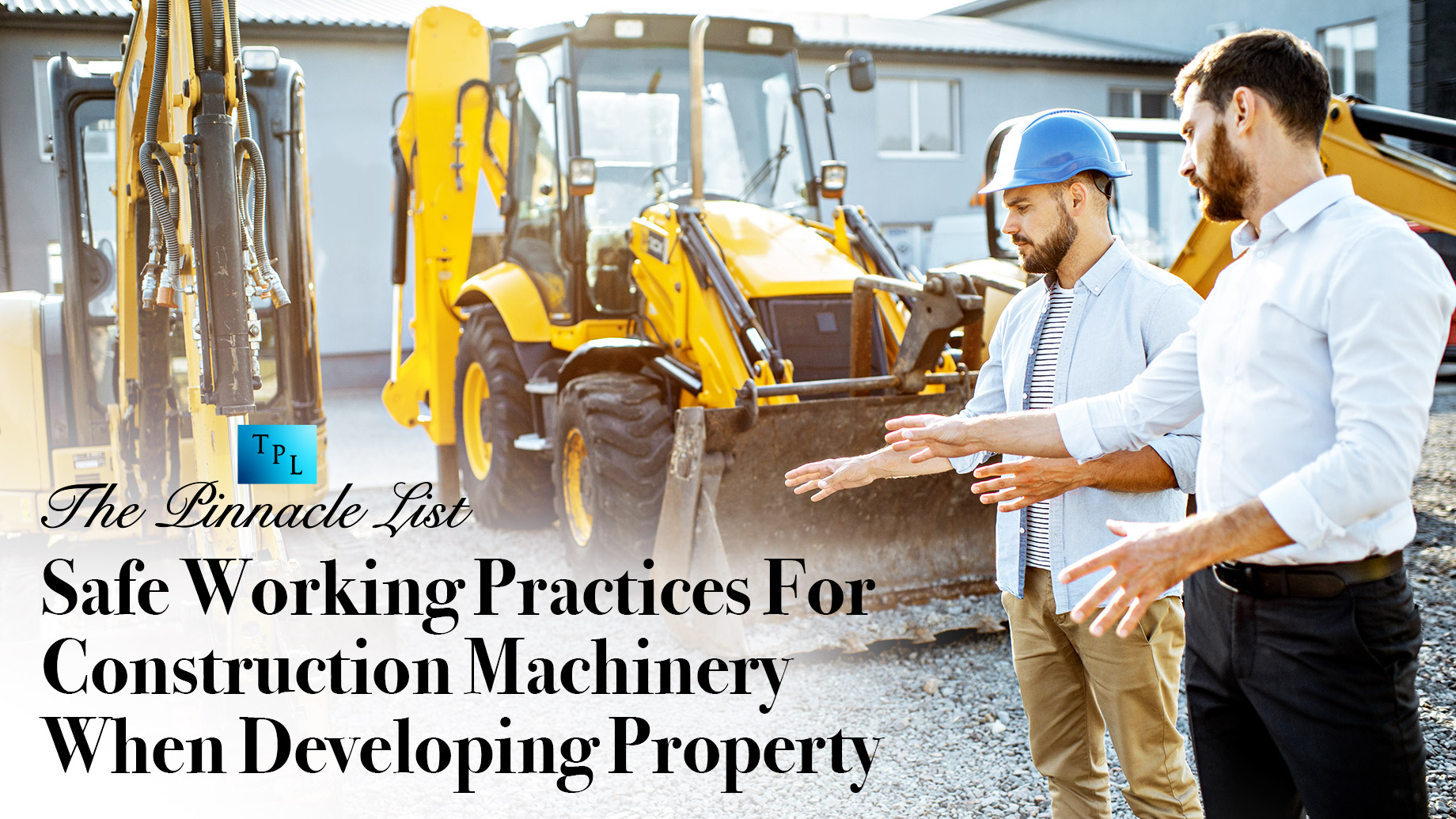
When developing property, construction machinery will be on site for earthworks and site preparation, landscaping, lifting, and delivering. The types of machinery used include excavators, loaders, cranes, off-road forklifts, skid-steer loaders (Bobcats), trucks, and backhoe loaders.
If the site is much larger, road rollers, graders, and scrapers may be used for constructing roads and driveways.
The interface between pedestrians and machines is one of high risk. Many injuries on worksites are caused by workers on foot being hit by machines or the loads they are carrying. In some countries, the ultimate responsibility for injuries on the site falls to the property owner, but will include the main contractor, and any subcontractor deemed at fault. For this reason, using good practices to ensure the safety of all workers on site is advisable.
Toolbox meeting
The day should start with a meeting that reminds people of the hazards and explains what will be happening that day, including any work that might introduce hazards, such as deliveries of materials.
Trades working on-site during the day may need to stop work or move to another area in the case of crane services delivering materials, for example.
PPE
Personal protective equipment is essential. The primary concern is visibility; therefore, high-vis clothing should be worn. People on site should wear steel-toe boots at a minimum, plus gloves, ear protection, safety goggles, and a hard hat where appropriate.
Check qualifications and experience
This will differ depending on where you are developing the property, but it’s always good to ask contractors that their operators have the right permits and/or have had appropriate training. Find out if there are any operators on site with less experience. For example, excavator training can be conducted quite quickly, but it doesn’t necessarily make you a great excavator operator, as that takes years of practice. Excavator training is primarily there to ensure that an operator knows the theory of safe operation.
Site office or designated contact point
People visiting the site should not be allowed to wander around unaccompanied or without any kind of induction to the hazards. A site office is ideal as it’s a focal point for entry to the site, but if that’s not available, all working areas should be coned off, and signage should inform visitors what to do.
Drivers arriving at the site to load or unload must be made familiar with the site layout and the rules.
Hazard Board
A hazard board at the entrance to the site will let visitors know what kind of hazards are present, for example, overhead loads, soft ground, live wires, chemicals, etc.
Pedestrian Separation
Walkways that are protected by cones or barriers should be used to help workers on foot reach areas of the site without coming into contact with machines. Dedicated crossing points can be used to let machines through the walkways – all people should be aware of the protocols.
Use security fencing to stop the general public from entering the site.
Set rules for machine operators
The usual rule is to have an awareness zone and an exclusion zone. The exclusion zone is the zone immediately around a machine where a person could be injured. It depends on the size and reach of the machine. One around a forklift might be three metres, while one around an excavator with a long reach might be ten metres. If anyone enters the zone, the operator must stop the machine until the exclusion zone is clear. The awareness zone is a larger area around the exclusion zone where other people are working and could come into contact with the machines. Remember that people going about their job are often focusing on what they are doing, and may not hear or see a machine approaching.
Worker wellbeing
Worker alertness declines in difficult conditions. Accidents are more likely when workers are working against the elements. In hot conditions, ensuring there is some shade and water can help workers stay cool and hydrated and reduce accident risk. Some countries require mandatory breaks to be taken, usually one 10-minute break in the morning and one in the afternoon (both paid), in addition to an unpaid lunch break.
Materials storage
Any construction materials should be stored in a way that they are not likely to collapse, and not likely to cause issues with existing earthworks (e.g., affecting trenches or underground services).
At the end of the day
All machines should be secured so that they cannot be stolen (i.e., keys removed and kept in a lockbox somewhere). Gates should be closed and locked. The site should be checked properly before the last person leaves to ensure no unauthorized person is lurking around.